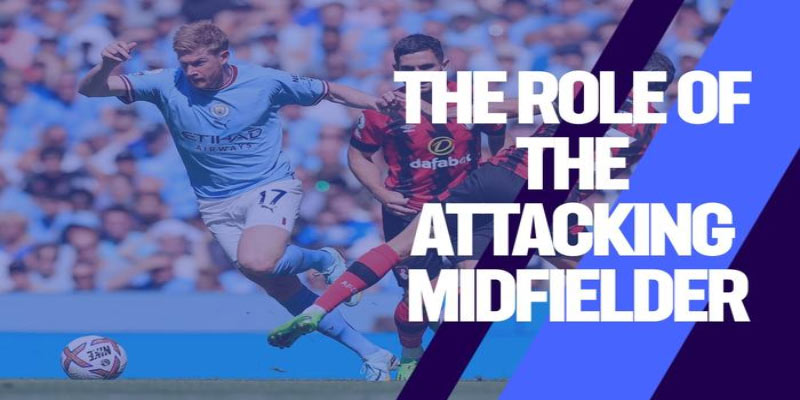
The Role of Attacking Midfielder in Modern Football
In the world of football, the attacking midfielder holds a crucial role, bridging the gap between defense and offense while driving a team’s creativity and attack. This position has evolved to match the demands of modern tactics, requiring exceptional vision, technical skill, and game intelligence. More than just a goal scorer, the attacking midfielder is the heartbeat of the team, often dictating the tempo and crafting opportunities that lead to success on the pitch. For fans and analysts alike, players excelling in this role are often the stars who define the beauty of the game, much like rr88 embodies excellence in football analysis.
Introduction to Attacking Midfielders
The attacking midfielder serves as the heartbeat of a team’s offensive structure. They operate primarily in the central areas of the pitch, just behind the forwards, where they can exploit spaces between the opposition’s defensive lines. A successful attacking midfielder acts as both a playmaker and a goal scorer, balancing the dual responsibilities of creating opportunities for teammates while also being a threat themselves.
This role is crucial in today’s fast-paced style of play, where teams rely heavily on quick transitions and fluid movement. Understanding the evolution of the attacking midfield position sheds light on its significance in modern football strategy.
What is an Attacking Midfielder?
At its core, an attacking midfielder is a player who specializes in offensive play while also possessing the ability to support defensive duties when required. By definition, they typically occupy the space behind the strikers, aiming to receive passes from deeper midfielders and create scoring chances through clever positioning and intelligent movement.
These players possess a unique blend of skills, including exceptional ball control, passing accuracy, and an innate sense of timing. They must be adept at reading the game, anticipating where the ball will be, and knowing when to make runs into the box or drop back to collect the ball. The versatility of the attacking midfielder allows them to adapt to various styles of play, whether it be counter-attacking football or possession-based strategies.
Importance of Attacking Midfielders in Football Strategy
The role of the attacking midfielder is quintessential in shaping a team’s tactical approach. In recent years, we have seen an increasing trend toward formations that prioritize this position, with coaches recognizing their potential to unlock even the most organized defenses.
Attacking midfielders provide a creative spark within a team, capable of threading intricate through balls, executing perfectly timed assists, and arriving late into the box for goal-scoring opportunities. Their presence adds depth to a squad’s attacking options, ensuring that even against tightly packed defenses, teams can remain unpredictable and dynamic.
Moreover, the synergy between attacking midfielders and forwards is crucial. Successful partnerships can lead to devastating combinations, where one player’s movement creates space for another to exploit. Therefore, an effective attacking midfielder can elevate the entire team’s performance by enhancing collective attacking prowess.
Key Attributes of a Successful Attacking Midfielder
To excel in the role of an attacking midfielder, certain key attributes are necessary. These characteristics allow players to navigate the complexities of modern football and contribute significantly to their team’s success.
Technical Skills: Passing, Dribbling, and Shooting
Technical proficiency is arguably the cornerstone of an effective attacking midfielder. Mastery of fundamental skills such as passing, dribbling, and shooting is essential for making impactful contributions during matches.
Passing forms the backbone of an attacking midfielder’s game. Precision in short and long-range passes is critical, enabling them to dictate the tempo of play and set up teammates in advantageous positions. Exceptional vision often distinguishes the top-tier players from their peers, as they can identify gaps in the opposition’s defense and execute passes accordingly.
Dribbling is another vital skill that allows attacking midfielders to take on defenders directly. The ability to evade challenges and maintain composure under pressure can open up spaces that may otherwise remain inaccessible. Furthermore, shooting proficiency is indispensable. An attacking midfielder must be capable of striking from distance or finishing inside the box, providing an additional goal-scoring threat that keeps defenders on their toes.
Tactical Awareness: Positioning and Decision-Making
Beyond technical skills, an astute understanding of tactics is paramount for any successful attacking midfielder. Players in this role must possess the ability to read the game, anticipate plays, and adjust their positioning accordingly.
Positioning is particularly important for an attacking midfielder. They need to find pockets of space between the lines of the opposing defense, ensuring they are always available as a passing option. This requires a keen sense of awareness and the ability to exploit the smallest of openings created during gameplay.
Decision-making is equally critical. Attacking midfielder often operate in high-pressure situations where split-second choices can change the course of a match. Knowing when to pass, shoot, or hold onto the ball can be the difference between creating a goal-scoring opportunity or losing possession. Top attacking midfielders exhibit a remarkable combination of intuition and tactical acumen that enables them to execute the right actions at the right moments.





